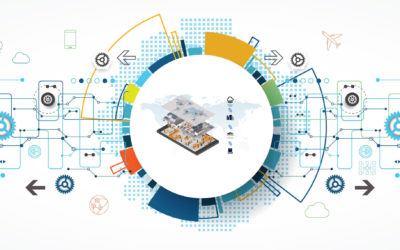What To Do With All That Data?
 We recently posted an article about Amazon’s Big Data initiatives, and it brought up some really interesting points that I’d like to talk about.
We recently posted an article about Amazon’s Big Data initiatives, and it brought up some really interesting points that I’d like to talk about.
This means that, as with Google, we have started to see adverts driven by Amazon’s platform and based on its data appearing on other sites over the past few years. As noted by MIT Technology Review last year, this makes the company now a head-on competitor to Google – with both online giants fighting for a chunk of marketers’ budgets.
However, ad sales is not the only arena in which Amazon is taking on Google – its Amazon Web Services offers cloud-based computing and big data analysis on an enterprise scale. This allows companies which need to run highly processor-intensive procedures to rent the computing time far more cheaply than setting up their own data processing centres – just like Google’s BigQuery.
There’s a lot to this article, and a lot to digest on this topic in general. But where iVEDiX becomes interested in the discussion is when we start talking about the ramifications for business users. It is all well and good to talk about these truly massive collections of data, but what does it all really mean? This data is no good if you cannot find trends in it, and while I’m sure that Amazon and Google have their products and services in place to make some sense of this data for their customers, both of them seem to be largely silent when it comes to empowering the end user. Big Data is just so big, and companies seem to have a hard time breaking it down for people.
This concern is percolating in the industry right now. Questions like “Do Companies Pin Too Much Faith On Big Data?” and infographics that show “The Cost of Too Much Data” seem to reinforce the idea that all of this data is creating a problem. The introduction to the above infographic states that:
Data can be a boon for marketing teams that use raw data sets to hone in on what it is their customers want. Yet at least 80 percent of teams say that they’re sometimes hard-pressed to make sense of it all. In turn, this leads to missed opportunities and time wasted.
So we get it — there is a lot of data out there! And sure, there are bound to be some growing pains as people try to figure out how to use all of it. There is no denying this a monumental task.
Back in April, Wired posted a piece called “Your Big Data is Worthless If You Don’t Bring it Into the Real World.” A provocative title? Sure. And the concept behind the title is practically a tautology anyway. I mean, who the hell doesn’t know this already? We could make this argument about anything that gets used in business — things need to have value, and that value is decided based on what it can produce.
But the Wired article goes a lot deeper than offering up a meaningless koan to usability. Instead, the authors demand we approach the problem from a different perspective. Data can’t just be “big,” it needs to be thick — i.e., it needs to have weight, not just volume.
Big data is really just a big collection of what people in the humanities would call thin data. Thin data is the sort of data you get when you look at the traces of our actions and behaviors. We travel this much every day; we search for that on the Internet; we sleep this many hours; we have so many connections; we listen to this type of music, and so forth. […]
To really understand people, we must also understand the aspects of our experience — what anthropologists refer to as thick data. Thick data captures not just facts but the context of facts. Eighty-six percent of households in America drink more than six quarts of milk per week, for example, but why do they drink milk? And what is it like? A piece of fabric with stars and stripes in three colors is thin data. An American Flag blowing proudly in the wind is thick data.
The end result, then, is one that is focused on producing usable outcomes for people. Thick Data (which, I admit, will probably not catch on as a term) might be the next big thing. miVEDiX, our mobile platform, was designed to bridge this gap, to make all of this Big Data usable to a person who has to make decisions with it. We don’t claim to have all the answers, but we do have a method. And that’s is what’s been missing from this whole conversation: method. A vision. It is impossible to memorize every word in the English language, but buying a dictionary is the easiest thing in the world. Big Data is the same way: forget the volume. Stop letting it scare you. With the right method (alphabetization) you can find any word in the dictionary. With the right vision, you can do whatever you want with Big Data. 



